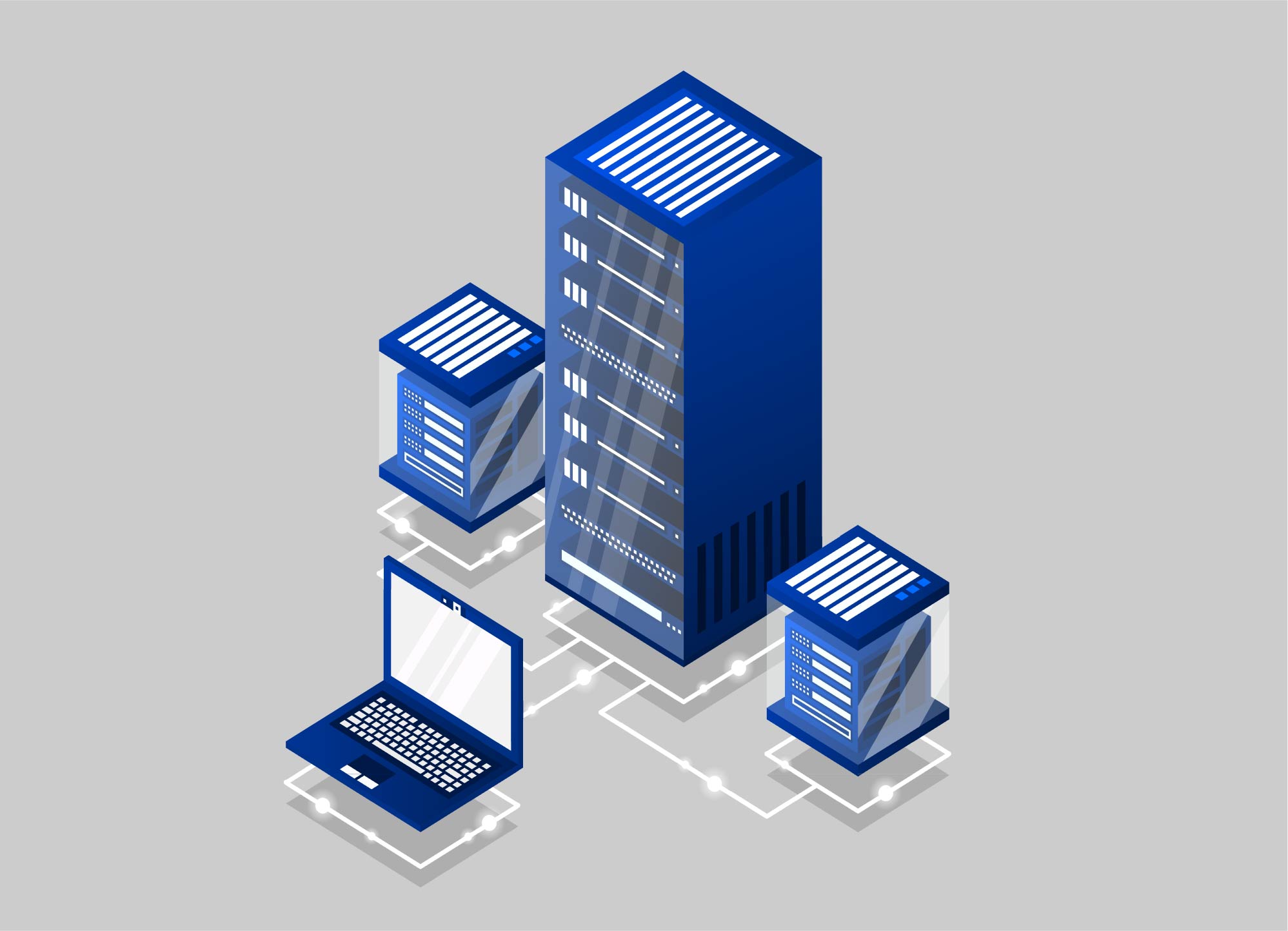Gartner’s Infrastructure, Operations & Cloud Strategies Summit
December 6-8, 2022, saw the return to “in-person” for what GTSG considers the premier technology-agnostic exchange of best practices in infrastructure. Approximately 3000 practitioners gathered in Las Vegas to hear from analysts and network with one another. As not everyone can attend, we made some notes.
This entry focuses on the keynote and the themes and trends impacting I&O leaders.
GTSG listens to Gartner
Our firm has over 100 consultants, architects, technical subject matter experts, and technical project managers deeply involved in mission-critical client engagements ranging from weeks to years.
By contrast, each Gartner analyst has perhaps 1,000 interactions with a broad range of organizations per year. Gartner then synthesizes these interactions, with best (and “emerging best”) practices crystallized into research representing the analysts’ best thinking over the full range of industry segments.
GTSG engages with dozens of these analysts each quarter and benefits from their unparalleled market view and collective insight. Our clients benefit from the knowledge that GTSG’s methods are consistent with Gartner-recommended practices and solution paths.
Tracks and Emphasis
Over two hundred sessions were available from a list of tracks, including
- Disruptive Practices, Trends, and Technologies
- Cloud Cookbook
- Platform Engineering
- Operations: Centralized, Distributed, Cloud
- Integrating Edge
- Enabling Security
- Skills, Organization, and Leadership
- Optimizing Cost and Value
with spotlight tracks, including
- Cloud Journey
- Diversity, Equity, and Inclusion
- Infrastructure Agility
- Midsize Enterprise
- Sourcing, Procurement, and Vendor Management
- Sustainability
- Technical Insight
For context, GTSG is recognized in Gartner research for cloud strategy, workload migration, disaster recovery, and mainframe expertise. As a provider of SLA-based managed services, we listen closely for the runtime/operational implications of any guidance we hear.
I&O FORWARD: leading the next phase of growth (the keynote)
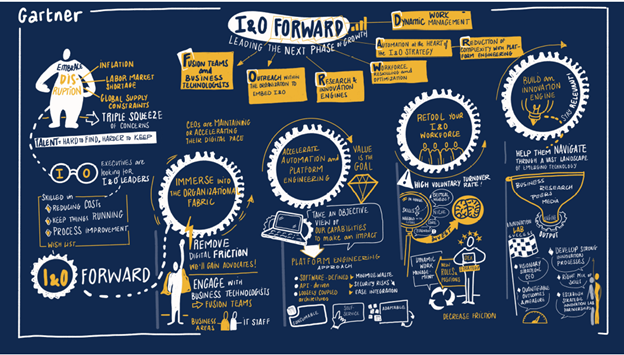
Three senior analysts delivered the keynote: Tom Bittman, Dennis Smith, and Roger Williams.
The business context
Tom opened…
{Well, wait.- Actually, Tom opened by reminding everyone that the keynote message in December 2019 was “embrace disruption.”
“Unfortunately,” he said ruefully, “we nailed that.”]
Tom opened by providing the business context characterized as a “triple squeeze:”
- inflation- research shows that 90% of CEOs don’t expect relief
- the labor market shortage, and
- global supply constraints.
None of us have previously faced these three challenges in tandem on this scale. (Tom also noted that Liberace was headlining in Las Vegas the last time inflation was this high.)
Four themes for I&O leaders to take back
- immerse into the organizational fabric
- accelerate automation and platform engineering
- retool your I&O workplace
- build an innovation engine
Immersion into the organizational fabric begins with reducing digital friction, which requires a better understanding of the business. When we’re successful, we gain business advocates: Roger challenged the attendees to spend 20% of their time immersed in business activities – to see the problems firsthand. He emphasized that the business doesn’t care about our IT metrics, dashboards, or objectives. They care about their own- those that make, save, and protect money (i.e., focus on revenue, profit, and risk mitigation).
Reduce digital friction.
Build capability.
Earn Support.
Further, I&O must engage with and support business technologists. Gartner’s research shows that 67% of CEOs want technology done directly in functional units and that 41% of non-IT employees are business technologists.
Fusion teams are the work units of digital delivery. These multidisciplinary teams blend technology or analytics capability with business domain expertise and share accountability for business and technology outcomes.
One of Roger’s case studies featured the use of fusion teams to develop 17 new dashboards – while eliminating 77! As he noted, it’s often challenging enough to pry even a single report from an executive’s hands.
Accelerate automation and platform engineering
Dennis introduced the concept of Platform Engineering: an early-stage technology all about creating layers of components and services that enable anyone to develop solutions quickly and safely. Client interest warranted an entire track devoted to this topic.
These platforms are ideally composed of software-defined, API-driven, loosely coupled architectures that allow multiple teams to update components simultaneously, enabling independent deployment and scaling. Benefits include reduced waste and security risks and ease of integration.
The focus on Platform Engineering fits with Gartner’s prediction
By 2025, 70% of new applications will be developed with low code/no-code approaches, up from less than 25% today
The imperative is clear for I&O to collaborate.
Intelligent automation is an essential part of “I&O Forward.” Where to start?
- Common tasks: mature organizations are incrementally more likely to have automated repeated tasks (e.g. patch deployment) and new infrastructure configuration and are twice as likely to invest in service desk automation
- Differentiating tasks: are 2½ times as likely to be orchestrated into service delivery and 7x as likely to invest in automated problem detection using KPIs
Those who do it best move beyond individual instances of automation and look for applications that provide business value for IT and the organization more broadly.
GTSG has a consultative offering that helps clients get started on their automation initiatives while providing them with a strategic framework.
Retool your I&O workplace
Tom returned and pointed out that everyone, everywhere, proclaims that “our employees are our greatest assets.” Those beliefs will be tested: Gartner predicts turnover 20% higher than pre-pandemic levels.
He presented this Gartner-developed skills quadrant, full of important analysis. It also serves as foundation for his message: if we truly value our people, we can’t let them be pushed exclusively (he was clear about this, someone needs to do the work) into the lower left-hand quadrant they’ve labeled “stagnant.”

For the record, GTSG finds “mainframe” to be on the wrong side of the dividing line between “stagnant” and “niche.” With 3,000 attendees all having flown, stayed in hotels or rented cars, it’s fair to say that mainframe technology is alive, well and mainstream.
Tom asked, “How many hours of non-technical training have you taken (or asked your teams to take) since the beginning of the pandemic?”
For the I&O team of the future, business skills will be as crucial as some of the emerging “must-have” technical skills (consistent with the “fusion teams” practice Roger covered above).

A Digital Experience Strategy means we’re open to flex work styles and open source/ freemium tools.
Where do we put our people? In a dynamic field like IT, traditional workforce planning methods struggle to stay current. No more square boxes, Tom says: adopt a Dynamic Work Management approach that will keep us focused on the work rather than the workforce- and energize our people in the process. Of concern: only 27% of employees agree that “my organization makes finding job opportunities that suit my needs easy for me.”
Firms succeeding with this approach utilize a continuum spanning (from least to most disruptive) new role creation, role configuration, internal redeployment, secure-flex work models, organizational design, and task self-selection.
Gartner Strategic Planning Assumption
By 2025, 50% of IT organizations will have established a DEX strategy, team, and management tool, up from 15% in 2022.
A Digital Experience Strategy means we’re open to flex work styles and open source/ freemium tools.
Where do we put our people? In a dynamic field like IT, traditional workforce planning methods struggle to stay current. No more square boxes, Tom says: adopt a Dynamic Work Management approach that will keep us focused on the work rather than the workforce- and energize our people in the process. Of concern: only 27% of employees agree that “my organization makes finding job opportunities that suit my needs easy for me.”
Firms succeeding with this approach utilize a continuum spanning (from least to most disruptive) new role creation, role configuration, internal redeployment, secure-flex work models, organizational design, and task self-selection.
Build an innovation engine
Dennis asked, “How do we select among these candidates for adoption?” referring to the nearly endless possibilities on the horizon:
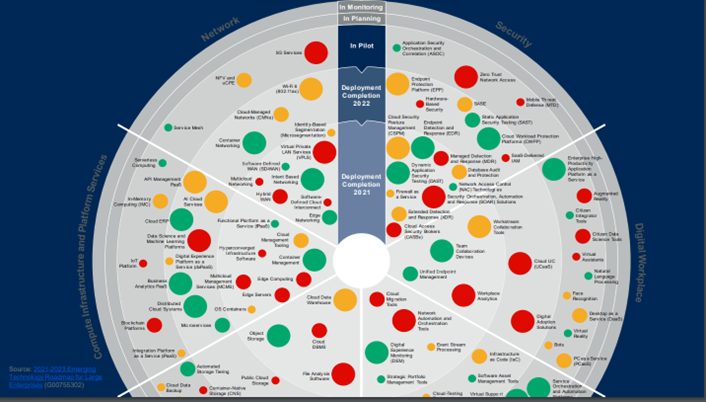
We need a process to apply ourselves to the next big thing, whether cutting edge (e.g., Quantum Computing, AI, Robotics, Digital Twins) or pragmatic evolution of existing technology (ZTNA, Distributed Cloud, Cloud Native Infrastructure).
So how do we sort through it? Successful organizations funnel these opportunities through the innovation engine. As with all machines, performance depends on design. Gartner studied 20 high-performing innovation lab engines and found five distinct patterns of innovation lab success
- The presence of a visionary, strategic CEO … or at least, senior executive buy-in
- The right mix of skills in the innovation team- including technical skills indeed, but also business acumen
- Quantifiable outcomes: organizations using business metrics to track their innovation lab performance are more likely to outperform competitors
- Robust Innovation Processes, which include design thinking, customer journey mapping, and hackathons
- Strategic innovation in partnerships: you don’t have to do this in isolation.
What if only two of 100 opportunities make it through the process? The innovation engine is doing its job: focusing on the business rather than functioning as a technical sandbox.
The presenters framed their message in the context of the theme, I&O Forward:
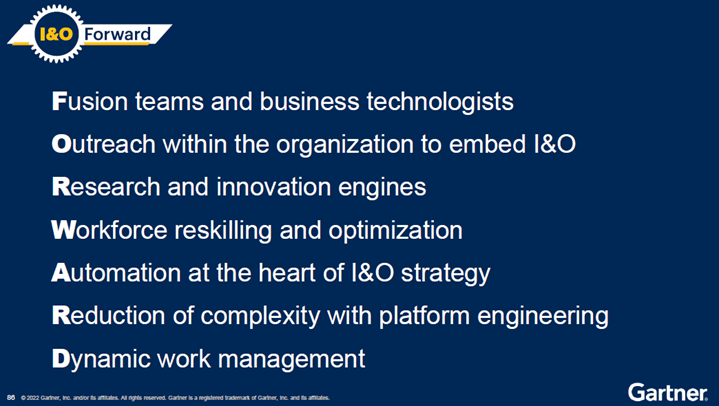
Beyond the keynote: brief coverage of two additional presentations on the trends impacting I&O
What I&O Should Know About Gartner’s Top Strategic Technology Trends
Ten technology trends, written and presented in a business context, were selected for an expected transformative impact over the next two to five years.
The “triple threat” discussed in the keynote, drives choices among
- save, given the dark clouds on the horizon
- grow based on the last few years
- transform – do we radically change the organization?
Gartner uses this framework:

- Optimize- for reliability, performance, and trust across the value chain
- Digital Immune System: the focus is on preventing security breaches and preventing downtime. Arun’s client learning advises adopting basic site reliability engineering (SRE) and chaos engineering, eventually elevating the level of testing. Cumulatively, these practices can reduce downtime by as much as 80%.
- Applied Observability: becoming a data-driven organization. From a technology perspective, it’s about observability: the use of external telemetry data to understand the internal health of a system. Arun’s client illustration advises us to treat observable data as a precious monetizable asset. Build data literacy within I&O and identify key business use cases.
- AI TRiSM (Trust, Risk and Security Management): perhaps 50% of AI systems never make it into production. Why? In part, we need to make these systems more transparent, to protect them from adversarial attacks, and to deploy them ethically (for example, to minimize the propagation of bias) and to move from “unmanaged” to managed risks (as illustrated below). His case study demonstrates the opportunity to drive and accelerate the implementation of ModelOps with learnings from I&O, whom he advises to structure teams and skills to provide a consultancy on security and scalability issues.
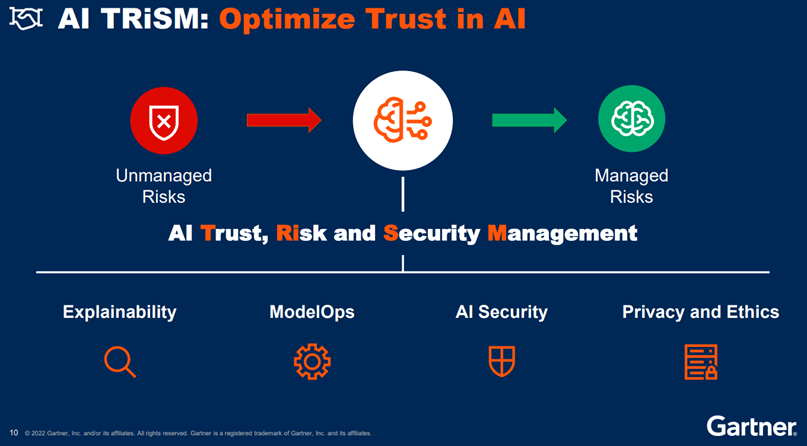
- Scale: verticalized industry solutions, product delivery, and the intersection of wireless and IoT
- Industry Cloud Platforms (ICP): the next generation of cloud services will be industry-specific, verticalized solutions. Primarily driven by the business, I&O’s alignment and support opportunity is meeting their need for help with integration, service assurance, and orchestration. Engage business technologists and begin to build an understanding of the potential benefits of ICP.
- Platform Engineering: discussed above, reinforcing the emphasis on reducing friction with the additional motivation of skills challenges. The client illustration advises “establish dedicated platform teams to curate and build internal platforms with composable components and reusable services. Evolve the platform via a product management culture spanning all stakeholders.”
- Wireless Value Realization: with more IoT devices on the planet than human beings, we expand our focus on people to a focus on things. Paraphrasing the client illustration: we must build our systems to handle diverse use cases of wireless technology applications in support of edge/IoT innovation which depends on next-generation networks.
- Pioneer: new ideas of delivering personalized products and new ways of engagement with our customers, including the metaverse
- SuperApps: very well-known in China (WeChat, et al.), SuperApps entail a set of core features and permissive data sharing drives new capabilities – either on their own or with an ecosystem, with native integration of the third party. The downside, of course, is the enormous power and control ceded to technology companies and the resulting potential for misuse. I&O’s opportunity is in security and privacy and to engage deeply in these necessarily complex integrations.
- Adaptive AI: Arun summarizes three key challenges:
- the fast decay of models due to the differences between real and training data – we need more adaptive capabilities with real-time monitoring
- organizations don’t have access to data. Vendors are emerging to meet this need with well-labeled and well-annotated data, as well as generating synthetic data
- today, models are trained for specific use cases. The marketplace sees emerging large language models, massively pretrained and applicable across a broad number of use cases
Arun’s advice to I&O: work with AIOps providers to pilot automation and adaptive learning of data correlation rules. Track improvements in IT operations and expand pilots.
-
- Metaverse: Arun first acknowledges the hype, despite progress to date. The next generation of metaverse will impact how we interact with customers and how we work inside organizations, particularly reimagining the hybrid work experience. One of his client examples focused on the industrial metaverse, encompassing IoT, real-time analytics, and digital twins.
- Sustainability: according to Gartner’s survey, only revenue growth and profit exceed sustainability as CEO priorities. IT is vital in enabling initiatives in sustainability, carbon offset, and monitoring carbon emissions. His client illustration featured the use of machine learning to build more accurate models to measure the initiative.
“Top Trends Impacting Infrastructure & Operations,” presented by Jeffrey Hewitt
Again, briefly, as we’ve already seen several:
Secure Access Service Edge: combines access with security- a single-vendor product sold as a service that is a more efficient way to connect and secure. The upside: it will connect users to applications in a secure manner, and it improves the efficiency of management and administration. The downside: Most offerings are immature, and implementation requires cross-silo collaboration (across network and security). Gartner recommends looking to consolidate at refresh/ renewal time, combining branch office and remote access, and running a pilot if leveraging cloud services.
Sustainable Technology: Dennis pointed out in the keynote that, for the first time, environment made the “top ten trends” list in the 2022 Gartner CEO and Senior Business Executive Survey. This trend incorporates governance, social, economic, and environmental aspects. Focus on sustainability provides an opportunity for I&O to support a positive brand image, but “where to begin” can be daunting.
GTSG, working with our partners, can help clients construct a practical plan to make progress toward their sustainability objectives.
Platform Engineering: as discussed in the keynote section, with additional emphasis on how I&O leaders will become more like product managers.
Wireless value innovation: an opportunity for I&O to combine the different wireless technologies resulting in new solutions of better efficiency, making the network a strategic innovation platform.
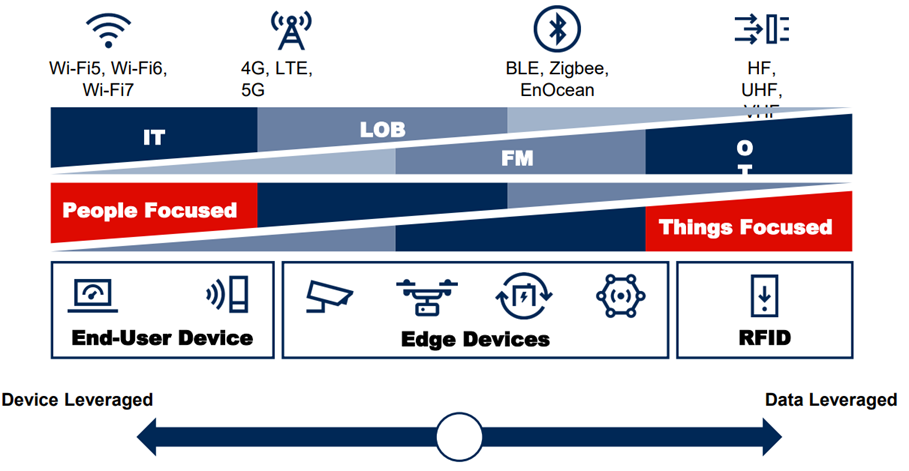
Note: Jeffrey notes this is the first time he’s seen more than one network trend on the list.
Industry Cloud Platforms: a bit more here, as GTSG is focused on workload placement and this is directly relevant.
ICPs knit together historically separate cloud solutions to meet to provide business advantage within a specific industry vertical. The market to date is immature, and there is enhanced risk of lock- in to the extent features become both compelling and proprietary. Gartner’s recommendation is to utilize these cloud platforms more for innovation- for business advantage- rather than to replace existing functionality. At a minimum, we must understand the roadmaps of prominent providers.
Heated Skills Competition: Jeffrey notes that this topic came up in half of the 1:1 meetings he had had at the event. Exacerbating skills shortages, some organizations add internal “competition“ by creating I&O positions within business units, and of course, the variety of I&O skills required is also on the rise. Tom covered many of Gartner’s recommendations in the keynote section above.
* * * * *
We hope you have found value in this summary. If you’d like to discuss any of these topics, please get in touch with us at Partners@GTSG.com. Thank you.

